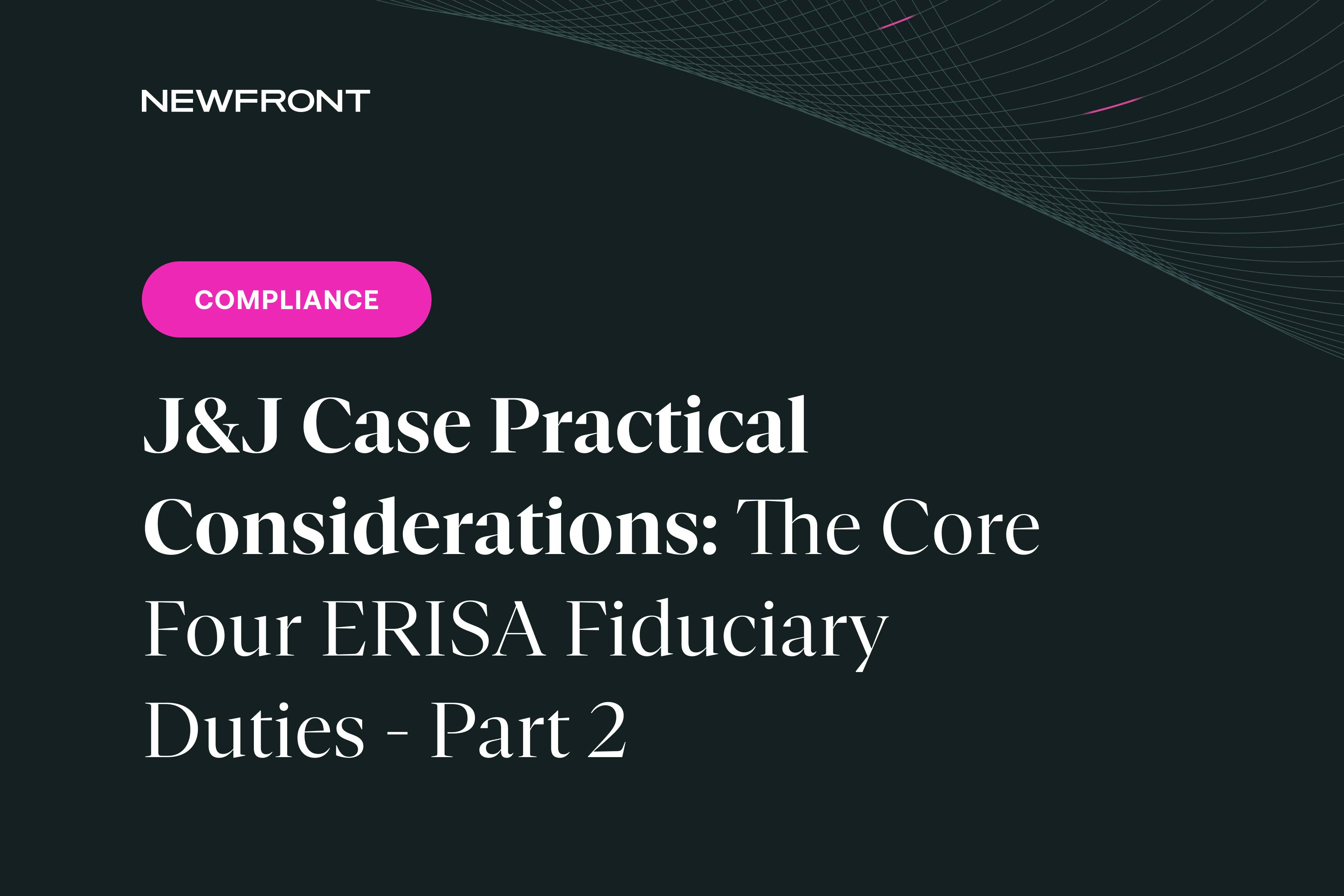Leave Rules Under the ACA Look-Back Measurement Method
By Brian Gilmore | Published June 1, 2018

Question: How does the ACA look-back measurement method apply to a non-protected unpaid personal leave? Do the same rules apply to dental and vision coverage?
Compliance Team Response:
Medical Coverage: Non-Protected Leave under the Look-Back Measurement Method
An employee who has full-time status during a stability period and changes employment status to working part-time (including where an employee has no hours of service because of a non-protected leave) will continue to be a full-time employee for ACA purposes for the remainder of the current stability period (which follows the plan year). The employer cannot drop the employee from coverage upon the change in employment status without creating potential ACA employer mandate pay or play penalty liability.
This is because an ongoing employee’s status during the stability period is not affected by current hours of service. Status as full-time or part-time is always determined by reference to the prior-year standard measurement period. In other words, the employee’s full-time status is locked-in and kept “stable” during the entire stability period (unless the employee terminates from employment).
At the end of the standard measurement period in which the change occurs, the employer will review all ongoing employees’ hours of service to determine whether they averaged at least 30 hours of service over the entire measurement period. Even though certain employees may have a period of part-time work or with no hours of service, the total average over the full measurement period may still result in the same status for the next plan year (stability period), depending on how many hours of service were completed and how late in the standard measurement period the change in hours occurred.
Employees who average at least 30 hours of service over the measurement period (i.e., reach 1,560 hours of service in the 12-month standard measurement period) will need to be offered coverage at open enrollment (the administrative period) for the entire next plan year (the stability period) to avoid potential pay or play penalties.
Summary: The employer will need to keep the employee in active medical coverage for the remainder of the stability period (plan year) to avoid potential ACA employer mandate pay or play penalties. This is true even if the employee is out on a non-protected leave and performing no hours of service.
If the employee averages under 30 hours per service during the current standard measurement period, the employee will be part-time and not offered coverage for the next stability period (the 2019 plan year). In that situation, the employee would experience a COBRA qualifying event (loss of coverage caused by a reduction in hours) upon the end of the current stability period (plan year).
Dental and Vision Coverage: Non-Protected Leave
The ACA employer mandate pay or play rules apply to medical coverage only. They do not apply to dental and vision coverage. Therefore, the employer does not have to apply the same look-back measurement method rules for determining an employee’s full-time status for dental and vision coverage eligibility.
If the employer does not follow the same look-back measurement method approach to determine full-time eligible status for dental and vision coverage, the employee’s non-protected leave will cause the employee to lose eligibility for active coverage. That loss of eligibility (caused by a reduction in hours) is a COBRA qualifying event for the dental and vision coverage (not the medical coverage because, per above, the employee remains in active coverage for the rest of the stability period).
The exception would be if the employer has a non-protected leave policy to continue active dental and vision coverage during the leave period. In that case, active dental and vision coverage would continue pursuant to the non-protected leave policy. Only upon exhaustion of the non-protected leave policy period would the employee lose active coverage and experience the COBRA qualifying event.
Summary: The general rule is that the employee loses eligibility for active dental and vision coverage upon the employee beginning the non-protected leave (or at the end of the month in which the leave begins). That loss of coverage caused by a reduction in hours is a COBRA qualifying event for the dental and vision coverage.
The exceptions would be if a) the employer chooses to follow the look-back measurement method to determine eligibility for dental and vision coverage (i.e., mirrors the ACA medical eligibility rules described above), or b) the employer has a non-protected leave policy to continue active dental and vision coverage during the leave period.
Regulations:
Treas. Reg. §54.4980H-3(d)(1)(vii):
(vii) Change in employment status. Except as provided in paragraph (f)(2) of this section, if an ongoing employee experiences a change in employment status before the end of a stability period, the change will not affect the application of the classification of the employee as a full-time employee (or not a full-time employee) for the remaining portion of the stability period. For example, if an ongoing employee in a certain position of employment is not treated as a full-time employee during a stability period because the employee’s hours of service during the prior measurement period were insufficient for full-time-employee treatment, and the employee experiences a change in employment status that involves an increased level of hours of service, the treatment of the employee as a non-full-time employee during the remainder of the stability period is unaffected. Similarly, if an ongoing employee in a certain position of employment is treated as a full-time employee during a stability period because the employee’s hours of service during the prior measurement period were sufficient for full-time-employee treatment, and the employee experiences a change in employment status that involves a lower level of hours of service, the treatment of the employee as a full-time employee during the remainder of the stability period is unaffected.

Brian Gilmore
Lead Benefits Counsel, VP, Newfront
Brian Gilmore is the Lead Benefits Counsel at Newfront. He assists clients on a wide variety of employee benefits compliance issues. The primary areas of his practice include ERISA, ACA, COBRA, HIPAA, Section 125 Cafeteria Plans, and 401(k) plans. Brian also presents regularly at trade events and in webinars on current hot topics in employee benefits law.
Connect on LinkedIn

